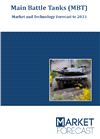This month, Team Anduril joined the U.S. Army’s 4th Infantry Division for Ivy Sting 2, the second in a progressive series of exercises designed to advance the Army’s Next Generation Command and Control (NGC2) ecosystem.
Just six weeks earlier, during Ivy Sting 1, the team demonstrated digital fires in live training, using NGC2 to connect sensors and shooters so artillery units could respond faster and hit with greater precision.
Ivy Sting 2 connected more data nodes, sensors, and Soldiers through a unified mesh network that linked every level of the fight, all the way to the division command post, delivering a more complete, real-time picture of the battlespace.

Market forecast by Region, Platform, and Contract Type. Country Analysis, Market and Technology Overview, Opportunities and Scenario Analysis, and Leading Company Profiles
Download free sample pages More informationAt the center of this event were two new integrations: Ghost-X, Anduril’s autonomous aircraft system, and the AN/TPQ-53 radar, which detects and tracks incoming enemy artillery, rockets, and mortars to pinpoint their launch points—both now feeding directly into the NGC2 ecosystem. These integrations brought real-time sensing, target recognition, and radar tracking into the same digital loop that drives faster decisions on the battlefield.
AI-Aided Target Recognition and Battle Damage Assessment
At Ivy Sting 2, Striveworks’ AI operations platform powered AI-enabled sensing and decision-making within the Next Generation Command and Control (NGC2) environment. Using Anduril’s Lattice Mesh network, a Ghost-X aircraft acted in a forward observer role—streaming live full-motion video for automated object detection and real-time battle damage assessment.
Soldiers from the 4th Infantry Division, working alongside industry partners, trained and deployed AI models through Striveworks’ Chariot platform, the AI layer of NGC2. As Ghost-X captured video from the field, these models analyzed the feed in real time to detect and classify enemy T-72 tanks using automatic target recognition algorithms.
Once a tank was identified, Striveworks’ Sky Saber application took that output and designated the target as hostile. The resulting data flowed through NGC2’s Lattice Mesh network to Soldiers coordinating fires, who reviewed the information and made the call to strike.
When artillery rounds landed, the same AI models compared pre- and post-strike imagery to verify that the hit was successful. The AI significantly reduced the cognitive burden on operators and shortened the time between detection and decision while keeping humans in control at every stage to review, validate, and authorize actions before execution.
Together, Striveworks’ Chariot and Sky Saber, Anduril’s Ghost-X, and NGC2’s open architecture showed how AI, sensing, and networked command systems can work as one—delivering real-time intelligence and faster decisions at the edge of the battlefield.
Data at the Speed of the Sensor
Ivy Sting 2 also introduced direct integration of the Army’s Q-53 radar into the NGC2 Mesh. Previously, radar data passed through multiple legacy systems before reaching the units that needed it—each step adding delay and risk. Now, a Voyager ruggedized edge computer running the Lattice software stack is co-located with the Q-53 radar, translating raw radar data into NGC2 format and sharing it instantly across the network.
This change eliminated data bottlenecks, letting Soldiers across fires, intelligence, and air-defense teams act on radar information in near-real time, whether connected to the cloud or operating in the field with limited connectivity.
From Edge to Cloud
Building on lessons from Ivy Sting 1, where NGC2 operated exclusively at the edge, Ivy Sting 2 expanded to run simultaneously at the edge and in the cloud. Data from Ghost-X and the Q-53 radar flowed seamlessly to command-post nodes and cloud-based applications, giving leaders a single, coherent operational picture across every echelon.
What’s Next
With Ivy Sting 2 complete, the Army and Anduril team are scaling toward greater complexity. Upcoming exercises will add new command-and-control nodes, mission threads, and airspace-deconfliction capabilities. Each iteration advances NGC2 toward division-wide deployment and the culminating Ivy Mass event in 2026, where the entire 4th Infantry Division will operate as one digitally connected force.